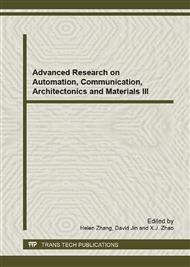p.199
p.203
p.208
p.215
p.219
p.223
p.227
p.231
p.235
Research on Mechanical Automation with Analysis of Mixed Train Scheduling Problem on the High-Speed Rail Line
Abstract:
In this paper, we study mechanical automation with analysis of mixed train scheduling problem on the high-speed rail line and present a new simulation approach for solving the mixed train scheduling problem on a high-speed double-track rail line. Based on the discrete-time movement model, we propose control strategies for mixed train movement on a high-speed double-track rail line. Using our proposed method, we can effectively simulate the mixed train schedule on a rail line. The numerical results demonstrate that a proper decrease of the departure intervals can enhance the capacity.
Info:
Periodical:
Pages:
219-222
Citation:
Online since:
August 2013
Authors:
Keywords:
Price:
Сopyright:
© 2013 Trans Tech Publications Ltd. All Rights Reserved
Share:
Citation:


